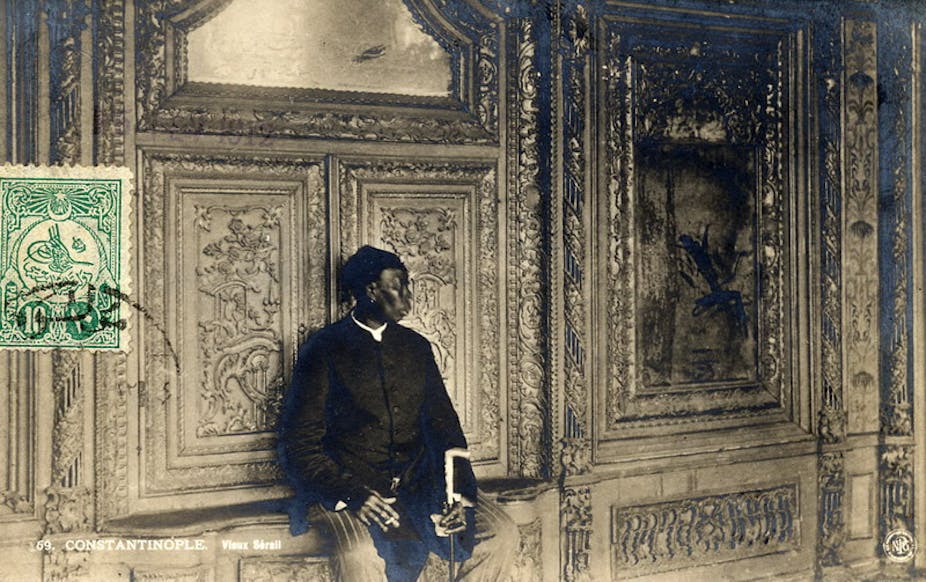Abu Bakr al-Baghdadi proclaimed Islamic State (IS) as a Muslim caliphate on June 29, 2014, with himself as caliph, a term reserved for a successor to the prophet Muhammad (PBUH). His would be the newest caliphate in a line extending from the Rashidun Caliphate (632-661), through the Umayyads (661-750), Abbasids (750-1517) and Ottomans (1453-1924). Each of these earlier caliphates, however, had a feature that IS lacks and which may not even be possible for the newly proclaimed “state”.
Currently, IS is more of a marauding horde than functioning state. IS operates more like the Vandals or the Ostrogoths of European history rather than any historic caliphate. Its “citizens” are self-described warriors (jihadists) killing men, capturing women and grabbing booty as they go. Many of its fighters are foreigners from Europe, North America or other Middle Eastern countries, rather than locals who are the core citizenry for anything that can legitimately be called a state.
Beyond effective use of social media for recruitment, there appears to be little of the governance that makes this state a true state. IS’s goal is clear: “purifying” Islam through eliminating competing religious ideologies, whether they are held by other Muslims, such as the Shi'a, or practitioners of other religions, such as the Yazidi and Christians.
What is a state without a capital?
While al-Baghdadi has appeared in the Syrian provincial capital of Ar-Raqqah, IS has yet to establish a proper capital. A true state needs a central place to which taxes are paid and from which laws, regulations and other administrative functions descend. Thus far, funding for the IS seems to come largely from smuggling oil, extortion and bank robbery, and not from taxpaying citizens.
Creating a stable capital will be difficult. With the weaponry IS has acquired, it can fight a ground war. But previous caliphate capitals had walls to protect their seat of government from attack. Such defences would be ineffective now. As the recent air assault by the US and its allies shows, a Topkapi today would be fragile in the face of modern ballistics.
No above-ground capital would be safe for IS. To protect its control centre from bombardment, the caliphate would need to bury itself in tunnels, like termites (or al-Qaeda). But even a buried bastille would need to be some 60 metres down to be safe from bunker-busting munitions like the GBU-57A/B Massive Ordnance Penetrator.
Should the IS manage to create a political state with a capital, how closely could it model its governance upon the historic caliphates it claims to emulate? In all preceding caliphates, power was demonstrated, in part, by the number of women the caliph controlled. Hundreds of women were impounded in the palace from which government decisions emanated. Most of the women were not for sexual pleasure, but simply to demonstrate dominance.
At the moment, IS’s systematic killing of men and taking of women performs as a predatory horde rewarding its warriors more than as an organisation developing the governance of a true caliphate. A core question is whether the new caliph will be able to maintain and control the women he acquires as well as his predecessors did. And who will handle the daily governance for the new caliphate to maintain cohesion in the state?
Caliphates relied on eunuchs
All previous caliphates relied on a special class of bureaucrats to provide stability and statesmanship. Those were eunuchs, who were unable to impregnate the women sequestered in the palace. Eunuchs were without family and dependent upon the caliph for support.
For four millennia and through many different Asian empires and caliphates, eunuchs proved themselves to be efficient governors. Their presence was, again, a sign of the power and authority of the ruler.
The number of women and eunuchs in the central palace during the various caliphates could be quite large. The Caliph al-Muqtadi (908-932) presided over a palace that contained 4000 women, 7000 eunuch guards and menial labourers, plus 4000 eunuch bureaucrats to administer the realm.

When the Fatimid caliphate fell in 1171, the seat of government had 12,000 members. Only Caliph al-‘Adid and his immediate male relatives had intact testicles. The rest were women and eunuchs.
As long as IS persists in beheading rather than castrating the males it captures, it has little hope of resurrecting a historic caliphate. Granted IS is already acquiring women, but it has no-one to guard them for the caliph and no infertile functionaries to enact the authority of the state.
While it has been less than a century since the fall of the Ottoman Empire, it is clear that a key concept for continuity with the great caliphates of the past has been lost. Simply stated, if the IS doesn’t build a deeply fortified city and start producing eunuch bureaucrats, it will never have the stability and endurance of historic caliphates. The best it can hope for is to be recognised as a 21st-century predatory horde.
It is an academic questions as to which is more barbaric: to behead (murder) or to castrate (mutilate). But of the two choices, if IS continues along its current path, it is likely to be remembered like the Vandals – that is, as murderous marauders who get brief mention in high school history classes.
There is no reason to believe that the state IS aims to develop will be less barbaric than its fighters’ current “jihad”. But al-Baghdadi will have to change how his followers process prisoners if he is sincere about getting his caliphate up and running.

